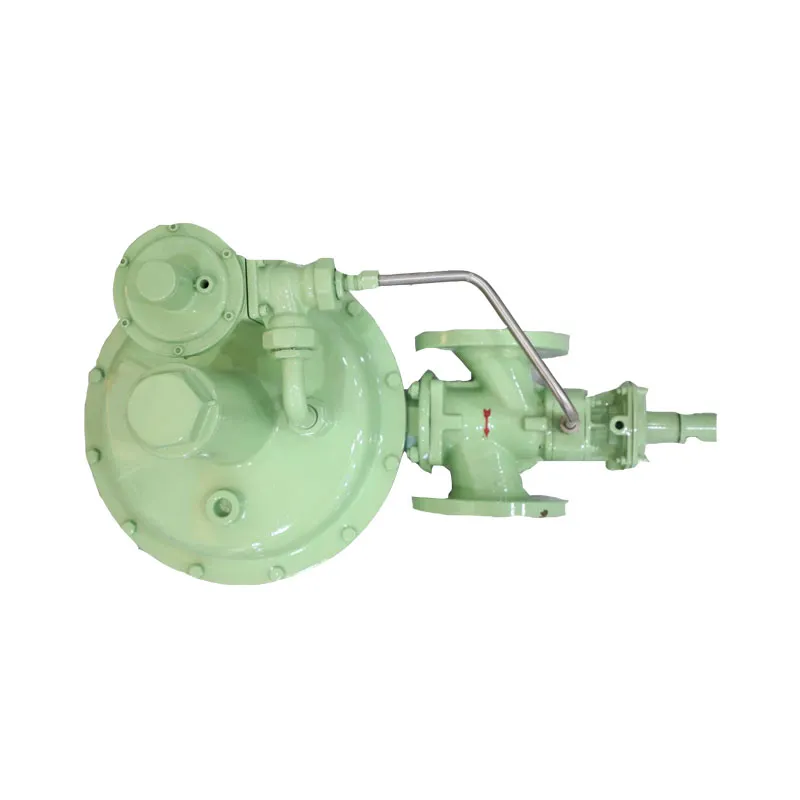
Dec . 31, 2024 10:46
Back to list
natural gas regulator
Understanding Natural Gas Regulators Function and Importance
Natural gas is a vital energy source that plays a crucial role in heating, cooking, and electricity generation across the globe. As its usage grows, the infrastructure that supports its distribution becomes increasingly important, particularly when it comes to the safe and efficient delivery of this resource. One key component of this infrastructure is the natural gas regulator. This article will delve into the function and importance of natural gas regulators, along with discussions about their types, working principles, safety features, and recent technological advancements.
What is a Natural Gas Regulator?
A natural gas regulator is a device that controls the pressure of gas as it moves from a pipeline into residential, commercial, or industrial applications. Gas is supplied to consumers at high pressure to ensure efficient transportation over long distances through pipelines. However, this high pressure is not safe or practical for use in homes or businesses, where lower pressure levels are required. The primary function of a gas regulator is to reduce the high pressure of gas to a safer, usable level before it reaches appliances like ovens, furnaces, and heaters.
Types of Natural Gas Regulators
There are two main types of natural gas regulators first-stage regulators and second-stage regulators.
1. First-Stage Regulators These are typically located at the boundary where gas enters a distribution system. They serve to lower high-pressure gas from transmission pipelines to a medium pressure suitable for later distribution.
2. Second-Stage Regulators Generally found in residences or businesses, these regulators further reduce the gas pressure to a low level that is safe for domestic or industrial use.
Each type plays a crucial role in ensuring that gas pressure is maintained within specified limits, thereby providing a consistent and safe supply of natural gas to end users.
Working Principle of Gas Regulators
Natural gas regulators operate based on the principles of pressure differentiation. Inside the regulator, a diaphragm is responsible for sensing the downstream pressure. When the pressure level drops below a predetermined threshold, the diaphragm moves and opens a valve, allowing more gas to flow in and thereby increasing the pressure. Conversely, if the pressure level exceeds the desired limit, the diaphragm will close the valve to restrict the flow of gas. This automatic adjustment ensures that the pressure remains stable, safeguarding both appliances and users from potential hazards that can arise from pressure fluctuations.
natural gas regulator

Importance of Safety Features
Regulators are equipped with various safety features to prevent gas leaks or overpressure situations, both of which can be hazardous. Among these features are
- Relief Valves These are designed to vent excess pressure to the atmosphere if it exceeds safe levels, preventing the risk of explosion or fire.
- Overpressure Protection Devices These systems are installed to shut off the gas supply in the event of pressure surges, ensuring user safety.
- Monitoring Systems Many modern regulators are equipped with sensors and alarms that notify users of any irregularities in pressure, allowing for immediate action to prevent accidents.
Technological Advancements
In recent years, technology has led to the development of advanced gas regulators that offer enhanced safety and efficiency. Smart regulators are now integrated with digital monitoring systems that provide real-time data on gas usage and pressure levels. This data can be remotely accessed by utility companies or end users, helping to manage consumption more effectively and detect issues before they escalate.
Additionally, advancements in materials and designs have led to more durable and reliable regulators, which can withstand extreme conditions and ensure long-term operation with minimal maintenance.
Conclusion
Natural gas regulators play an indispensable role in the safe and efficient distribution of natural gas. By managing pressure levels, they ensure that consumers have a reliable and safe supply of energy for heating, cooking, and processing. With the advent of new technologies, the efficiency and safety of gas regulators continue to improve, keeping pace with the growing demands for energy while prioritizing user safety. Understanding the functionality and importance of these regulators is essential for anyone involved in the natural gas industry or those who rely on this critical resource in their everyday lives.
Latest news
-
Safety Valve Spring-Loaded Design Overpressure ProtectionNewsJul.25,2025
-
Precision Voltage Regulator AC5 Accuracy Grade PerformanceNewsJul.25,2025
-
Natural Gas Pressure Regulating Skid Industrial Pipeline ApplicationsNewsJul.25,2025
-
Natural Gas Filter Stainless Steel Mesh Element DesignNewsJul.25,2025
-
Gas Pressure Regulator Valve Direct-Acting Spring-Loaded DesignNewsJul.25,2025
-
Decompression Equipment Multi-Stage Heat Exchange System DesignNewsJul.25,2025

